1. Introdução
This article reflects on '1 Question 10 Answers', a didactic exercise devised by the authors of this text. Here they will explain how the exercise developed and explore its potential as a story-making tool in design education.
'1 Question 10 Answers' was initially devised in 2017 as part of a Typography module on the BA in Design at the Universidade da Madeira.
Emerging out of the notion that Typography is essentially an act of interpretation (Bringhurst, 1992), this exercise was a process of learning through making, designed to reflect upon how non-fiction stories can be generated in creative practice. In particular, the focus was on narrative structures and the poetic and structural functions of repetition.
Students were offered the freedom to choose a specific topic, so that they could work on a subject that they were curious about. They then had to devise a question about this topic and pose that question to ten people. The answers that they received would then act as texts to be interpreted, ultimately resulting in the construction of a communicative artifact.
The primary goal of this process was both technical and procedural but primarily intended as a learning exercise in how to make a small typographic book. This subsequently evolved into a research project that explored innovative ways to tell stories and addressed how to enter into communicative dialogues with others while in an exploratory environment that embraced both creativity and playfulness.
When the exercise was revised for an intensive workshop in the School of Design at the Politecnico di Milano in 2021, an additional motivation for undertaking the project materialised. The researchers came to understand that the workshop could offer space for students to vocalise their ideas after almost a year of online teaching. Considering the collective traumas of the pandemic and the ways that these events had impacted upon the students’ lives, the brief offered a creative opportunity for them to share their experiences. What were the questions might they ask? What stories would they want to tell?
2. Iterative non-fiction story-making
This exercise was triggered by Bringhurst's (1992) proposition that typography can be considered an essential act of interpretation. Bringhurst postulated that the typographer’s role is similar to that of a theatre director or an orchestra conductor, because their primary task is to interpret an idea and convey this to an audience. Bringhurst seems to echo Warde (1930), in her idea that the typographer should strive for transparency in this regard, becoming almost “invisible” in order to communicate successfully.
The idea of an author striving for transparency can be related to the concept of ‘deep listening’ (Oliveros, 2005). In this sense, the author places themselves at the service of a text, such that the text itself and the situated conditions of a project can allow for numerous ways to tell and understand a story (Lai, 2006). This theory is related to the idea that research, linguistic experimentation and invention are interconnected processes (Bertolotti, 2020). It is for this reason that documentation-based narrative projects and fieldwork can be considered useful devices in the creation of a text that is open to a potentially infinite number of interpretations (Van Maalen, 1988)
The non-fiction narratives within this exercise were created through a process of documentation that could be understood as an act of subjective elaboration. This idea was partly inspired by the way that animated documentaries can be used to imply narratives in subtle ways, particularly when dealing with delicate subject areas. This approach allows for the 'constructedness' of the animation (Wells, 2011) to address a challenging non-fiction story, while maintaining a level of tact and extreme sensitivity (Ward, 2008)
Through the use of such approaches, the researchers also wanted to introduce students to the functions and processes of storytelling as well as the critical roles played by repetition and listing in narrative structure. Stories have existed throughout human history because of their ability to create order in the chaos of existence (Barthes, 1966; Calvino, Rancière, 2008; Tuomola, 2016). Repetition has frequently accompanied the act of storytelling, especially in the retelling and recital of oral traditions, helping stories to be memorised and allowing them to endure over time (Ong, 1981). Repetition is still an important part of contemporary storytelling in various ways: from the teaching of nursery rhymes to the creation of catchy song refrains and the development of serial television programmes. If stories have always been part of the history of humanity, the acts of listing have been an essential part of this legacy, responding to an inherent need to create meaning (Eco, 2009) and read the world through the construction of taxonomies.
3. The ‘rules of the game’ and the question of access
'1 Question 10 answers' was about collecting concise answers to subtle questions. In order to help the students clarify their ideas and go deeper, they were encouraged to ask a second question and possibly collect about additional materials, such as photographs, drawings, and supporting research material. The use of a field book was recommended, as a tool to transcribe their answers and to gather other useful information which they could graphically elaborate upon.
Since this was not a sociological exercise, the students were absolutely free to choose their interviewees. The only consideration that they were required to make was that the interviewees should be fully informed about the purpose of the project. Interviewees were also informed that their answers would be treated with care, respect and necessary ethical caution, especially in situations where sensitive topics might be discussed.
When the project was launched, students were warned about the difficulty of gaining access to subjects willing to be interviewed. Indeed, the challenges involved with gaining access to willing subjects regularly emerged in individual reviews with the students. It was at this point that students began to more fully consider their relationship with their potential interviewees and understand that it was often difficult to find people willing to share their stories. In addition, students discussed the difficulty in eliciting meaningful answers from their interviewees as well as the challenges in avoiding monosyllabic responses or polite replies. Students also noted the awkwardness in asking for more information and getting back in touch with the interviewees to ask for further details and clarifications. When briefing the project, it was stressed that students should be patient and not necessarily go as fast as they wished. Students were instructed that time was needed to explain the intent of the project to their potential respondents and to wait for any questions that their subjects might have in advance of an interview. The students understood that they had to be ready to rework their schedule in order to gain the trust and the access required to conduct a fully informed, consensual and ethical interview.
Another aspect that was highlighted to the students at this stage was the importance of treating the information gathered from their interviews with care. They were instructed to provide their interviewees with their finished results, to let them know how their answers were elaborated upon in the context of the project and to show what the final outcomes looked like.
While the researchers kept a record of the interviewees, the question of how to manage personal data was the responsibility of the students. They could decide how to refer to their interviewee, for example by using their full name, initials or even a pseudonym. Students learnt that in some instances it might have been necessary to completely hide the identity of their interviewee, in other situations it might be be relevant to indicate only a specific biographical element of their subject. The collected answers from these interviews were then used as the starting point for a work of analysis, elaboration and research.
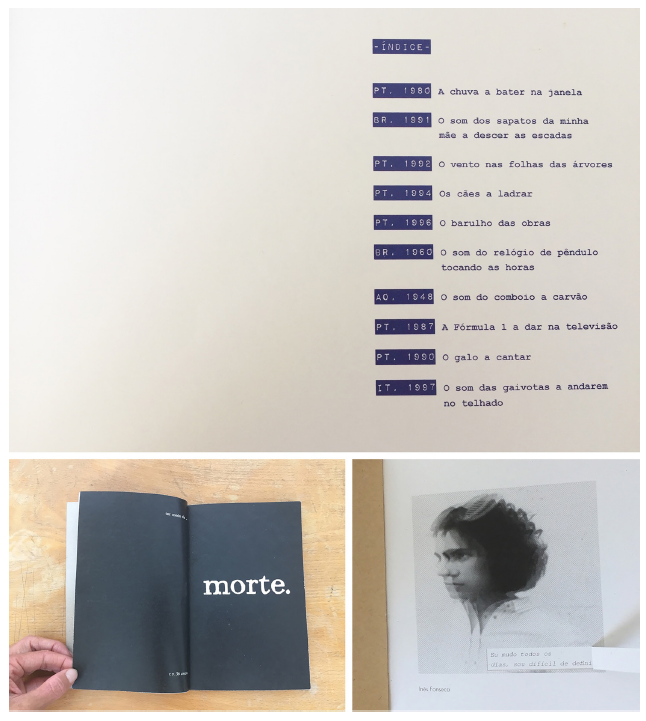
Fig.1 Typography Module, BA in Design at UMA, Madeira, Portugal - Details from the projects by Lara Jumá, Laís dos Santos Lopes, Michelle Texeira (2017). Source: the author
Details from the projects by Lara Jumá, Laís dos Santos Lopes, Michelle Texeira, where we can see three different ways of depicting an interviewee’s answers:
In her book dedicated to fragilities, Lara indicated the interviewees simply by their initials and their age.
Lais Santos, in her book about childhood memories of sounds, identified her interviewees at the end of the book by simply linking the answer with their date and place of birth.
Conversely, the book by Michelle Texeira openly reveals the identities of her interviewees. Her book, which is an exploratory collection of how people define themselves, uses a double page to catalogue her answers, alongside a black and white photographic portrait captioned with the name of each interviewee.

Fig.2 Workshop at the School of Design, Politecnico di Milano, Milan, Italy (2021)- Neg+otium. A project by Carlotta Bacchini, Francesco Battistoni and Mattia Mertens. Source: Carlotta Bacchini, Francesco Battistoni and Mattia Mertens
Neg+otium. A project by Carlotta Bacchini, Francesco Battistoni and Mattia Mertens. The work tackles the subject of procrastination, where interview responses were carefully analysed and classified by age, gender, profession, object of procrastination, guilt, and keyword.
4. Universidade da Madeira - Typography Module (2017-2019)
(BA in Design, Universidade da Madeira, Madeira, Portugal - 2017-2019)
This exercise was first run on the Typography module of the BA in Design at the Universidade da Madeira from 2017-2019. Following its initiation in the 2016 academic year, the Typography module was subsequently reworked in terms of its practical and pedagogical outcomes. It became essential to familiarise students with the process of making a printed editorial project, starting from the gestation of an idea.
Living on an island such as Madeira, the challenge of creating a professional editorial project is by no means easy. It was essential for students to understand the context of the island, what could be achieved in practical terms and take into account factors such as lead-times as well as how to develop local collaborations. This is why it was decided that the educational strategy in tackling these issues should allow plenty of time for experimentation with language and technique. Students were also offered the opportunity to consider the processes of refinement and finalisation, such as where to source and how to choose papers stocks, the challenges of print production and the technicalities of binding. Students had an ample amount of time to go through these steps of making and were encouraged to embrace the limitations of working in a location where creative and technical resources are limited.
The exercise lasted roughly three months, from the moment of launch to final delivery. Students mainly worked in groups of two and took their first week to define their question and collect their initial answers before the ideation work began. Parallel to this, students undertook research work on their chosen theme. In addition, a series of narrative possibilities were experimented with through typography and graphic design tests.
Each week a new limitation or challenge was introduced to the students in order to explore, in very practical and intuitive ways, a specific typographical issue. For each of these tasks, students were restricted to always using the same text (their collected answers). For instance, one week’s exercise involved working only with typography and only with black and white in order to focus on composition and the potential expressiveness of letterforms. The following week, students were allowed to explore use of colour; while another exercise investigated the act of combining handwriting with typography. At a later stage in their creative process, and after having completed their visual research, a further exercise explored how to connect image-based visual research with typography.
During these two hour lessons, the students were asked to make an ‘instant book’ by the end of the session, which they could then develop at home. At the end of two months of work, the students had created at least seven different ‘instant books’ which each responded to their given challenges. Before starting the final elaboration, these collective portfolio of books were placed on tables and observed and discussed by the cohort. This emerged as a key creative strategy to start a conversation amongst the group and for the students to verbally explore how to develop their final work.
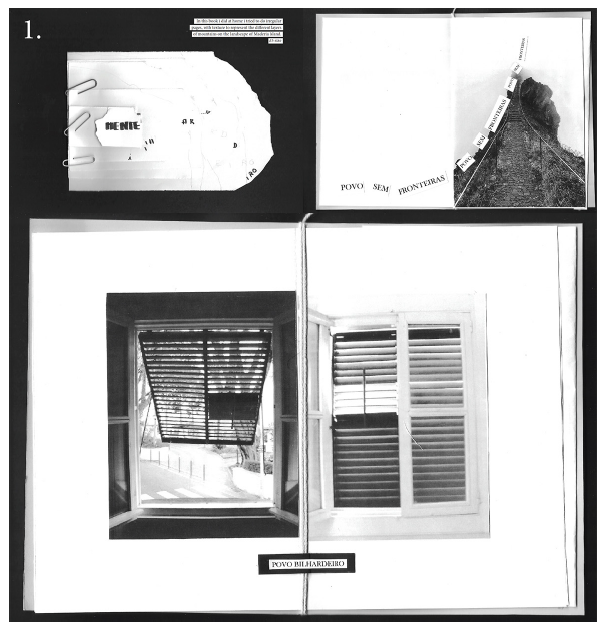
Fig.3. Typography Module, BA in Design at the Universidade da Madeira, Madeira, Portugal (2017) - Inês Fonseca’s research work. Source: Inês Fonseca
Images from Inês Fonseca’s research work. Her project was dedicated to how the inhabitants of Madeira defined themselves.
Over the three years that the project has run, approximately 40 books have been created from disparate starting points and abstract questions: including highly personal diaristic responses, to light-hearted and playful zines. The forms of the books and the stories contained within them were also very diverse. They included books in states of decomposition, oversized books measuring upwards of 10 meters long, tiny micro-books and three-dimensional pop-up books.
5. Outcomes in Madeira
Among the many books produced during this exercise, three specific projects were realised in 2017 by Laís dos Santos Lopes, Lara Jumá and Inês Fonseca. Laís dos Santos Lopes’s question asked about childhood memories of sound. The book, made in red, blue, white and black, is a tribute to Calligrammes: Poems of Peace and War 1913-1916 by Guillaume Apollinaire (1918). (1)
Lara Jumá collected confessions of personal fragility from ten of her friends. Her book was bound with black thread and made use of various materials and paper stocks hued in dark and light tones. As she states in her notes at the beginning of this book: “fragility can make us feel weak or strong. For this reason I used different papers and fabrics for their own inner characteristics”.
Inês Fonseca collected perceptions of the island from ten of its inhabitants, creating a series of notebooks that unfolded in numerous different ways. The student played with typography and collage-making in order to echo the gaze of people who spy from their windows (a common sight on the island) and who become a somewhat sinister visual presence in the landscape.
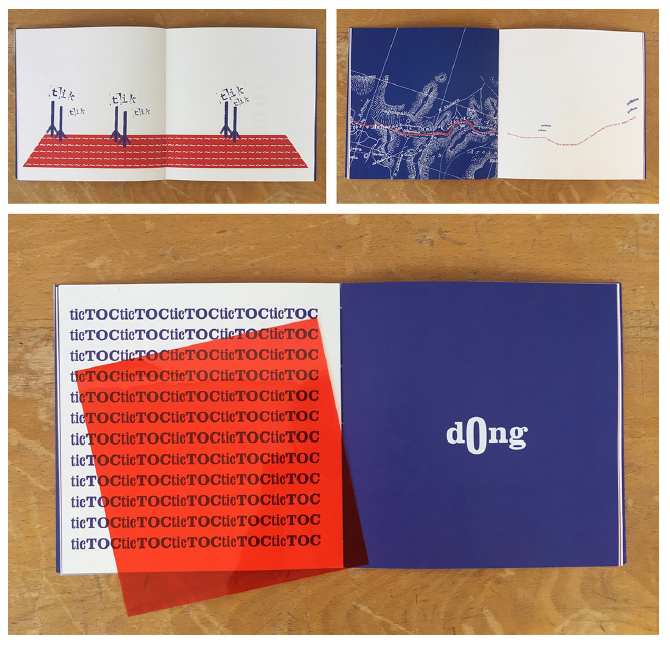
Fig.4 Typography Module, BA in Design at the Universidade da Madeira, Madeira, Portugal (2017) - Project by Laís dos Santos Lopes. Source: Laís dos Santos Lopes
Project by Laís dos Santos Lopes - Question: What is a memory of a sound from your childhood?
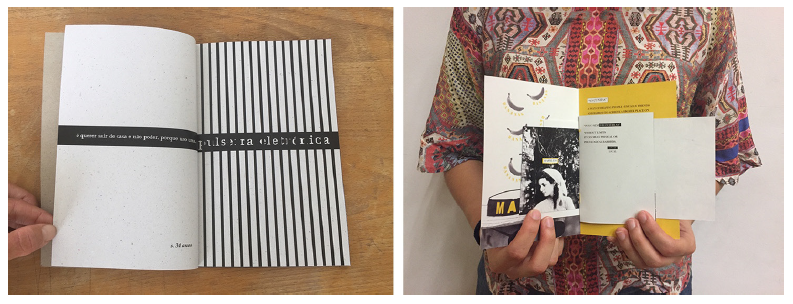
Fig.5 Typography Module, BA in Design at the Universidade da Madeira, Madeira, Portugal (2017) - Left: Project by Lara Jumá - Question: What is your fragility? Right: Project by Inês Fonseca - Question: How can you define the people from Madeira? .Source: Lara Jumá & Inês Fonseca
Left: Project by Lara Jumá - Question: What is your fragility?
Right: Project by Inês Fonseca - Question: How can you define the people from Madeira?
In the second edition of this course, in 2018, Sara Patricia Abreu and Diana Gonçalves collected favourite poems from their ten interviewees, which they placed in ten separate envelopes. Upon opening these envelopes, the reader discovers not only the poems, but also a series of visual collections related to the texts, combining typography and photo sequences that illustrate sign language In the third and final year of this experiment, Francesca Mauri produced a generative work, inspired by surrealist games. After providing a few short sentences to her interviewees, she then asked them to create short stories. The project resulted in a collection of narratives that could develop into a potentially infinite book and which continues to evolve.
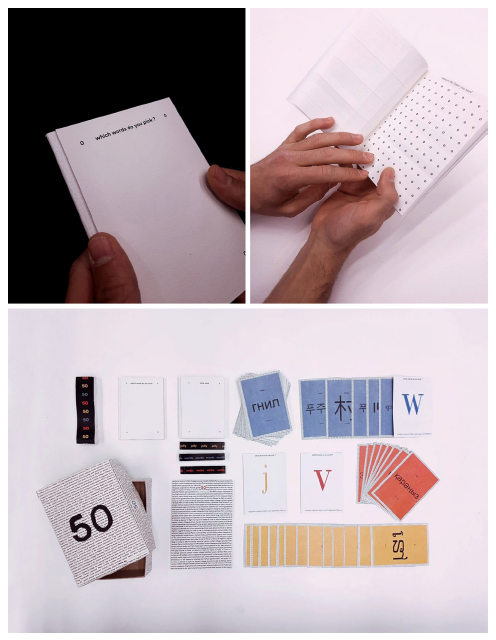
Fig.6 Typography Module, BA in Design at the Universidade da Madeira, Madeira, Portugal (2019) - Project by Francesca Mauri - Question: What is the sentence you can invent with these words that I am giving you? Source: Francesca Mauri
Project by Francesca Mauri - Question: What is the sentence you can invent with these words that I am giving you?
This small white book, printed entirely in black, combines digital typography with rubber printmaking illustrations and a series of detachable elements that invite the reader to continue the game.
6. The Workshop in Milan
(MA in Communication Design, School of Design, Politecnico di Milano, Milan, Italy, February 2021)
The same design and educational principles as those described above were applied within a one-week intensive workshop at the Politecnico di Milano in February, 2021. The ‘rules of the game’ and the approach were the same with the only difference being the requirements for the final outcome. Participants were not required to produce a printed book, but a communication system in which at least one artefact was physical and at least one was digital.
The goal of this particular workshop was to offer an experience that would allow students to reflect upon language and poetics in order to explore intuitive ways to work with transmediality in communication design through creative practice (Jenkins, 2006; Ciancia, 2016)
The five-day workshop involved 41 students who were divided into 13 teams, made up of three or four students. It was held on consecutive weekdays completely online and involved a series of lectures and daily feedback sessions. The course alternated practical lessons with feedback sessions in an attempt to leave more time for the group to engage their project activities. On the first day, the students were divided into groups and decided upon their specific question. The next day they were asked to arrive at the feedback session with the answers that they had collected. They would spend the third day creatively reflecting on their responses, before finally developing this information into a physical project over the final two days.
Every team was given the goal of picking one question and posing this question to ten people. They were free to choose the topic and the only specific rules were to respect the privacy of their sources and ask express permission to share pictures or personal information. Students also had to act as reporters and actively transcribe their responses. Only in the second phase of the workshop were they required to creatively reinterpret their collections of answers. These ‘reinterpretations’ relied heavily upon the poetic sensibility and creativity of the students and this was critical to the success of the final project outputs. The final pieces were made up of a diverse mix of different of media, in both print and digital formats.
Choices and paths
This diagram depicts various aspects to the projects carried out in the workshop at the School of Design, Politecnico di Milano, including: question, type of media, data about interviewee and type of story. From this info-graphic we can note the variety of choices and paths taken by the students.
7. Outcomes in Milan
Firstly, the Boo project was a collection of remembered fears from childhood. This was compiled an assemblage of stories, which developed out of the voice recordings made during the interview process. This audio was later used within a video story accompanied by ten supporting illustrations. The main outcome from this project was a book that contained the full transcription of the interview responses, and which also contained the name, age and the hometown of each interviewee, along with a graphic interpretation of their story. These visual representations were photographic collages which were intended to illustrate the dark, mysterious and foreboding atmosphere of the stories. The book was then digitally transposed and adapted into an Instagram account, that contained animated gif illustrations for each of the ten answers.
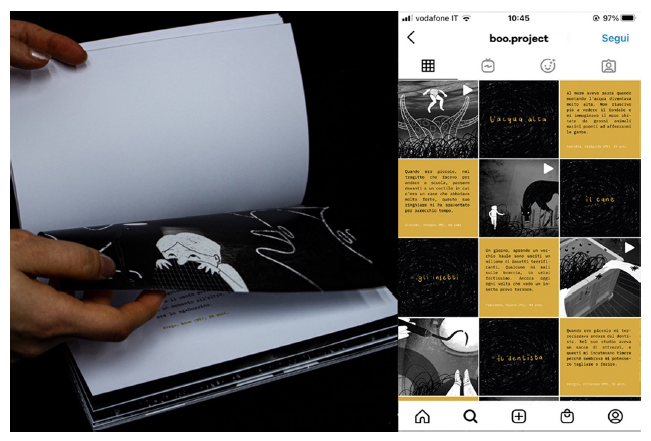
Fig.7 Workshop at the School of Design, Politecnico di Milano, Milan, Italy (2021) - Boo project by Linda Agosto, Alice Bocchio, Roberta Tibaldo, Federica Vatri Media: Book, Video, Instagram page visualization - Question: What was your biggest fear when you were a child? Source: Linda Agosto, Alice Bocchio, Roberta Tibaldo, Federica Vatri
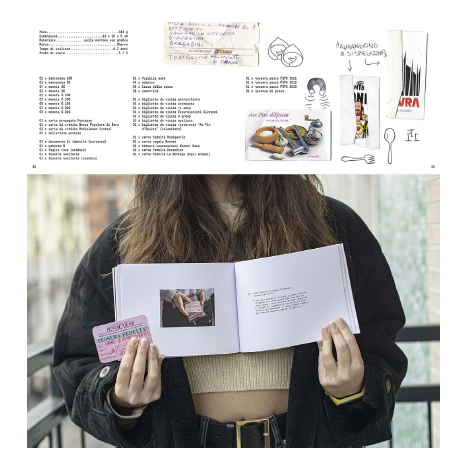
Fig.8 Workshop at the School of Design, Politecnico di Milano, Milan, Italy (2021) - “If lost please return to” project by Daniele dell’Orto, Alessandro Quets, Octavian Husoschi. Media: Fanzine, webpage - Question: What does your wallet say about you? Source: Daniele dell’Orto, Alessandro Quets, Octavian Husoschi
Another group created a project entitled “If lost please return to”, the central outcome of which was a fanzine. The team posed the question “What does your wallet say about you?” to a number of their close friends. The wallet was then used as a creative means to encourage people talk openly about themselves. The team noted that wallets often contain little objects, artefacts and fragments that tell stories and which can be used as talking-points.
The goal was to document the contents of peoples’ wallets through a photographic report. Each wallet was photographed in the hand of the interviewee along with a selected object from inside the wallet. In addition, the entire contents of all the wallets were scanned. The small objects that were discovered from this process were then displayed in the fanzine next to a catalogued list of components, annotated with handwriting. Every single component found in the wallets were catalogued according to an analytical framework, which took into account factors such as weight, size, material, brand, lifetime, and usage. The pages of this fanzine also contained original materials taken from the actual wallets, which gave a touch of tangible reality to the publication. In addition to this printed outcome, the group designed a webpage as an expansion to the collection, acting as a platform to invite new people to join in with the project from afar.
Through structured documentation, this work focused on ways to extract elements found within the wallets, details which even the owner might ignore or overlook. This process had the effect of excavating stories, which might reveal something new about the interviewee’s personality.
The project Mèmore (2) involved interviewees being asked to share a memory related to the sea. The group decided to work primarily digitally, translating their interviews into texts, videos and illustrations, which were eventually uploaded to Instagram. The responses are introduced with three different posts in the Instagram feed: the first is an illustrated fictional image that introduces the protagonist. The second post is a video that outlines the story itself and which contains the original voice recording from the interview along with a set of visual representations that convey sensations and atmospheres of the narration. The third post is simply a short quote, referenced with the name and the age of the interviewee. The narrative world of the sea which emerges through this project is enriched by a vivid collection of photographic images that combine to create a dynamic, surprising and evocative Instagram feed. The account is intricately detailed, utilising different, unique texts for each post. Together they convey a nostalgic tone of voice that expresses a lucid experience related to the sea.

Fig.9 Workshop at the School of Design, Politecnico di Milano, Milan, Italy (2021) - Mèmore. Del mare ricordo project by Agnese De Santis, Arianna Pasqualone, Alessandra Perosi Media: Instagram page @delmarericordo (illustrations, pictures, video) - Question: Could you tell me a memory linked to the sea? Source: Agnese De Santis, Arianna Pasqualone, Alessandra Perosi.
Another group produced the project Genre-ation which explored songs that make people want to dance. The team interviewed ten people between ten to 84 years-old and learnt that age is not always a factor in what music people listen to. For example, a ten year-old interviewee spoke about listening to the song YMCA by the Village People from 1978, while a 64 year-old female interviewee spoke about dancing to the pop song Non mi basta più by Baby K from 2020. (3)
The title of the project Genre-ation was carefully chosen because it is, a word that encompasses the generation from which music belongs, as well as the varying generations of the interviewees and the genre of the music itself. The initial idea was to record a short video in which each interviewee would perform a dance step to their chosen piece of music. However, as some of the interview subjects were reluctant to appear in the video, the team opted to reproduce the dance movements through the pre-cinema ‘grid barrier’ animation technique. The final outcomes for this project were a vinyl record, a CD and playlist on Spotify. In the booklet of the CD we can read the responses from the interviewees and see dance movements represented through the ‘grid barrier’ images. Each testimony is accompanied by the name and age of the interviewee, and is presented in correlation with the age of the piece of music.
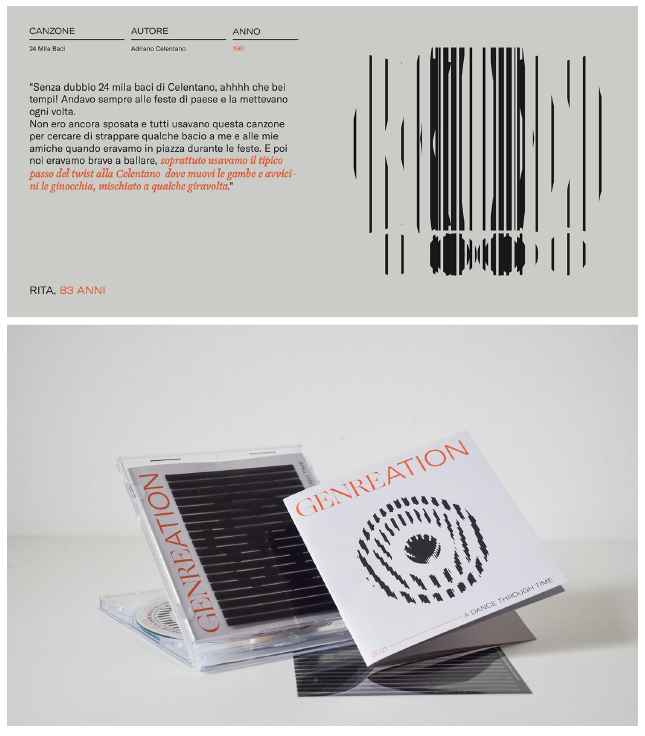
Fig.10 Workshop at the School of Design, Politecnico di Milano, Milan, Italy (2021) - Genre-ation project by Letizia Agosta, Aurora Antonini, Federico Meani, Sara Zanardi.Media: CD, vinyl record, Spotify playlist, booklet - Question: What's the song that makes you want to dance? Source: Letizia Agosta, Aurora Antonini, Federico Meani, Sara Zanardi
An additional group created the project Multimentis in order to represent the plurality of the advice we receive as individuals along with the stories that we hear from a diverse multitude of minds. The piece takes the form of a box containing sugared candies and is designed for use by teenagers and young adults. The project involved collecting responses from people over the age of 50. The concept was to ask the respondents to offer advice to their teenage-selves, and in-turn indirectly advise today's generation of young people. The responses that the group received were translated into corresponding ‘pills’ (in the form of candies), which were to be taken after reading the package leaflet. These ‘pills’ came with their own beneficial effects of taste and colour.
The team reflected on how to communicate these tips to their audience, eventually taking inspiration from the field of food design and, in particular, Martì Guixe’s “Happy Pills” store in Barcelona. (4) In addition to having created the prototype of the pillbox, the team decided to collect ten micro-narratives which they displayed on an Instagram page.
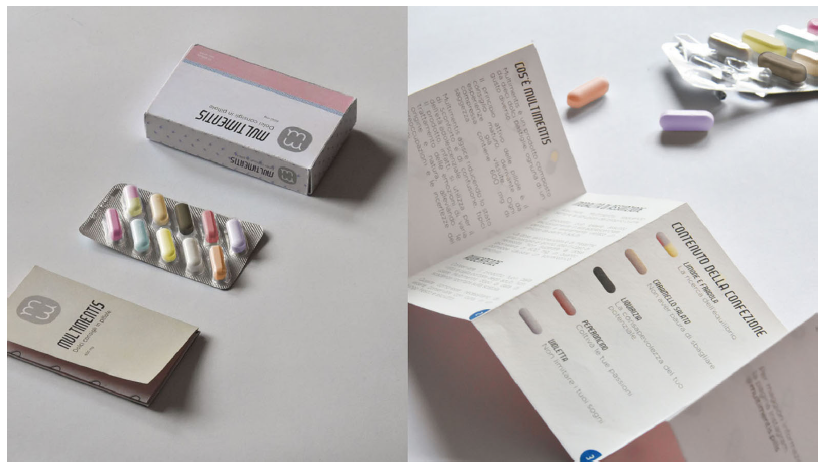
Fig.11 Workshop at the School of Design, Politecnico di Milano, Milan, Italy (2021) - Multimentis project by Silvia Carpanoni, Chiara Davoli, Eleonora Stucchi. Media: Prototype of a pillbox with its leaflet, an Instagram page @multimentis.pills - Question: In the light of the person you are today, what advice would you give to yourself as a teenager? Source: Silvia Carpanoni, Chiara Davoli, Eleonora Stucchi.
Neg+otium was a project designed by a group in order to reflect on and re-evaluate, in an ironic way, the subject of procrastination. While collecting the answers and making some research, the team reflected on the idea of procrastination, and reached the idea that procrastination is not a wasted time, but instead a period of creative potential. Starting from the idea that procrastination is not to something be fought but to be indulged, the team created a kit to help people procrastinate. After analysing the answers gathered from their interviews, the team designed a set of tools, in the form of objects, that each represented and promoted a unique form of procrastination. Each of these objects was coupled with an illustrated instructional label that depicted the personality of the interviewee, so that the audience could select the most suitable procrastination tool for them to use. The key reference that the team took for this solution was the design of first-aid kits, which they decided to creatively subvert. The group’s prototype was a 3D render of a case containing each individual tool, modelled with care and precision. The ultimate function of the kit was to stimulate creativity and help people procrastinate.
Finally, this group also designed a webpage in order to integrate the kit digitally. Accessible both from mobile and desktop, this landing page explains the context of the project and contains each of the answers from their respondents. The team decided to show the names and ages of their interviewees and used their poetic license to author a title for each type of procrastination and its corresponding tool.
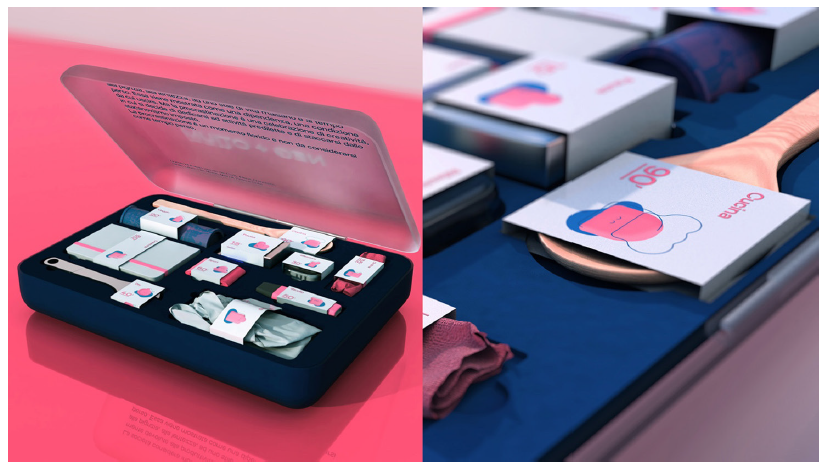
Fig.12 Workshop at the School of Design, Politecnico di Milano, Milan, Italy (2021) - Neg+otium, project by Carlotta Bacchini, Francesco Battistoni, Mattia Mertens. Media: Prototype of a procrastination kit, Web App - Question: We often find ourselves putting off the things we have to do: what do you do to procrastinate? Source: Carlotta Bacchini, Francesco Battistoni, Mattia Mertens
8. Discussion
The different experiences conducted both in Milan and Madeira have some differences.
First of all, teaching in Madeira has always been in presence, each time for a semester, with two weekly appointments, one more theoretical and one always practical. For the Milanese workshop, on the other hand, all teaching was conducted online, in a single week, with common moments and then group-by-group feedback sessions. Not only that: the groups of students were different in background and age: in the case of Madeira they were students of the first year of the Bachelor, almost all originally from the island, and with an average age of 19 years. In the case of Milan it was a group of Masters students, with diverse previous experiences and a higher age.
The fast pace of learning and activity in Milan and the slower Maderense one was therefore conditioned by the teaching opportunities, but also by the fact of dealing with different groups of students. Madeira's younger students couldn't have elaborated so much information and translated it into complex projects in just one week. Instead, the speed of the Milanese work was made possible by the high level of autonomy of the master's students, with more skills at a methodological and project level and in the use of tools.
Common aspects of these experiences are to be found in the type of work required, which, beyond the different teaching conditions and didactic objectives, remained constant. With this didactic exercise, all the students had to deal with fixed rules of the game: they had to digest them and use them to build their own narrative. Everyone had to deal with the relationship with the interviewees and with the reasoning linked to the care of personal information. Subsequently, they had to deal with the activity of interpreting the answers collected, asking themselves how to tell those stories and how to give them shape. In doing this, they had to exercise their listening skills and at the same time find their own voice, find their own personal way of telling those stories. In general, the students had reactions of slight bewilderment in front of a space for listening and interpretation at their disposal. This space seemed to be unfamiliar to them. What remains fixed in the exercise, apart from the rules of the game, is the opportunity to think in practice about what it means to interpret and what it means to listen to the suggestions of the text.
The '1 Question 10 Answers' exercise invited a range of experimental responses to a diverse variety of answers collated from interviews. Through this process, students could playfully explore how the act of interpretation might be put into practice, and in doing so, find ways to develop their own creative voice. Each of the outcomes produced by the students appeared very different in terms of aesthetics and narrative content. They ranged from very minimal and concise, to heavily constructed and intricate works. For example, in the projects Multimentis and in Neg+otium the process of interpretation led to students designing imaginary objects. It was only upon a closer reading that the speculative nature of these artefacts emerged and it became clear that they had been produced from a collection of stories documented through interviews. In the example of the project “If lost please return to”, the interview answers were immediately evident and the collections that accompanied these answers were clearly based on photographic material, lists and handwritten notes. On the other hand, in the project Boo, the answers gathered from the interviews were kept in their entirety. The interpretation of these research materials were mainly visual and realised through illustration and animation.
One common aspect to each of these projects is that they can be understood as works of interpretation, articulated in a diverse range of imaginative ways. In addition, it is clear that the collected stories do not only offer infinite creative possibilities, but also that they can continuously provide new opportunities for innovative narrative responses. Almost all the projects produced in the workshop at Politecnico di Milano exemplify this approach and further explore the potential of interactive functionality. One of the first projects at Universidade da Madeira that engaged with this type of outcome was produced by Francesca Mauri, who was inspired by, among others, the work by Robert Massin (5).
By repeating this exercise it became clear that its focus is the relationship between listening and interpretation. In other words, between what a text suggests and how the narrator interprets that text. It is a practical exploration that allows us to see how much work of poetry and interpretation is necessary even when we are confronted with the matter of documentation, of non-fiction.
Some of the most frequent topics of conversation during these didactic experiences have included: the way we approach fieldwork; the issue of the gaining access to interview subjects; the relationships we develop with interviewees; processes of documentation; the importance of ethics and the ways in which we protect identities. There has been a diverse breadth in the quantity and quality of the outcomes that have emerged through '1 Question 10 answers' project in the four years that it has been run and refined. The dialogue with students and the ways in which they have approached the subject of documentation, has led to the researchers reflecting on how the process of interpretation is fundamental in the creative exploration of non-fiction narratives.
9. Conclusions
Seeing that the principles and rules of the game of '1 Question 10 answers' were adapted well to two different contexts, one can think that this type of exercise has the potentialities to be experimented in new different contexts.
By carefully observing the learning process of the students who engaged with this exercise, the researchers became aware of the delicate balance that exists between a work of interpretation and the processes of dialogue and active listening. In other words, appreciating the importance of one’s personal perspective while attempting to understand the meaning of a text in a more neutral, impartial, and open-minded manner. By running this exercise four times and in developing it and refining it with each iteration, the researchers came to understand that the question of interpretation is an extremely complex and subtle subject, which will continue to be reflected upon in future work.
The act of creative interpretation does not only concern the work of an orchestra conductor, a theatre director or a typographer: it concerns all those who make communication.
In design education, an appraisal of interpretation processes offers the opportunity to generate new reflections on how the act of interpretation can be actively conscious, rather than simply implicit. The process of researching the subject in this way offers an opportunity for us to rethink our relationship with the objects that we interpret as designers and consider how this relationship is never neutral. Furthermore, it provides a framework to consider poetic issues related to storytelling and take note of ethical reflections.
















